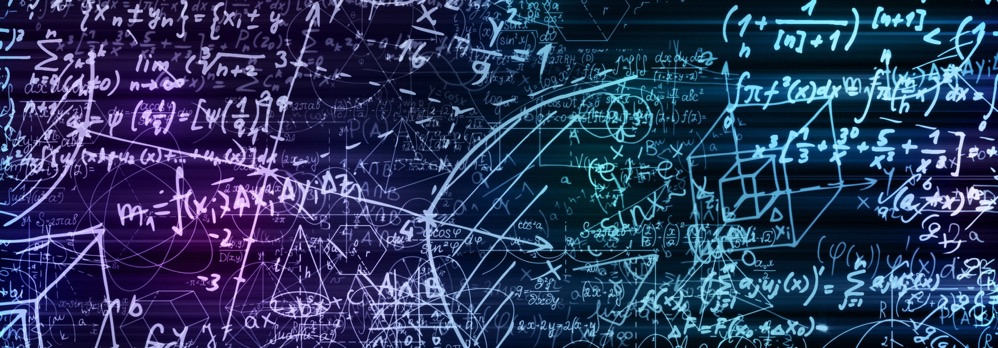主要适用对象
Edexcel FP3考生
AQA FP2考生
CIE FP2考生
特征向量的计算
标准计算特征向量的方法是先利用$\det(A-\lambda I)=0$计算特征值(Eigenvalue),再利用$A\mathbf{x}=\lambda\mathbf{x}$解出特征向量$\mathbf{x}$.
现以爱德思(Edexcel)教材的例题来复习特征向量的计算.
Example.
Find the eigenvalues and corresponding eigenvectors of the matrix
$$A=\begin{pmatrix}
2 & 1 & -3 \\
0 & 2 & 1 \\
0 & -4 & -3
\end{pmatrix}.$$
Solution.
Let
$$\begin{aligned}\det(A-\lambda I)&=\begin{vmatrix}
2-\lambda & 1 & -3 \\
0 & 2-\lambda & 1 \\
0 & -4 & -3-\lambda
\end{vmatrix}
\\&=(\lambda+2)(\lambda-1)(2-\lambda)
\\&=0.\end{aligned}$$
Then $\lambda=-2, 1, 2$.
To find an eigenvector of $A$ corresponding to the eigenvalue $-2$:
$$\begin{aligned}
&\ \ \ \ \ \begin{pmatrix}
2 & 1 & -3 \\
0 & 2 & 1 \\
0 & -4 & -3
\end{pmatrix}\begin{pmatrix}
x \\ y \\ z
\end{pmatrix}=-2\begin{pmatrix}
x \\ y \\ z
\end{pmatrix}
\\&\Rightarrow \begin{pmatrix}
2x+y-3z \\ 2y+z \\ -4y-3z
\end{pmatrix}=\begin{pmatrix}
-2x \\ -2y \\ -2z
\end{pmatrix}
\end{aligned}$$
and so
$$\left\{\begin{align}
2x+y-3z&=-2x & \\
2y+z&=-2y & \\
-4y-3z&=-2z &
\end{align}\right..$$
From $(2)$ and $(3)$: $z=-4y$. Let $y=1$, then $z=-4$. Substituting $y$ and $z$ to $(1)$, we have $\displaystyle x=-3.25$.
An eigenvector corresponding to $-2$ is
$$\begin{pmatrix} -3.25 \\ 1 \\ -4 \end{pmatrix}\ \text{or}\ \begin{pmatrix} 13 \\ -4 \\ 16 \end{pmatrix}.$$
Similarly, an eigenvector corresponding to $1$ is
$$\begin{pmatrix} 4 \\ -1 \\ 1 \end{pmatrix}$$
and eigenvector corresponding to $2$ is
$$\begin{pmatrix} 1 \\ 0 \\ 0 \end{pmatrix}.$$
三维空间中特征向量的第二种计算方法
在三维空间中,叉乘(Cross Product)也可以用于特征向量的计算. 这一方法要求先写出矩阵$A-\lambda I$,在矩阵中找到任意两行,且不成倍数关系(数学上我们称之为线性无关或线性独立,Linear Independent),计算对应行向量的叉乘结果即为特征向量. 以上题为例.
Solution.
Let
$$\begin{aligned}\det(A-\lambda I)&=\begin{vmatrix}
2-\lambda & 1 & -3 \\
0 & 2-\lambda & 1 \\
0 & -4 & -3-\lambda
\end{vmatrix}
\\&=(\lambda+2)(\lambda-1)(2-\lambda)
\\&=0.\end{aligned}$$
Then $\lambda=-2, 1, 2$.
To find an eigenvector of $A$ corresponding to the eigenvalue $-2$:
$$A-\lambda I=\begin{pmatrix}
4 & 1 & -3 \\
0 & 4 & 1 \\
0 & -4 & -1
\end{pmatrix}.$$
An eigenvector corresponding to $-2$ is
$$\begin{pmatrix}
4 \\ 1 \\ -3
\end{pmatrix} \times \begin{pmatrix}
0 \\ 4 \\ 1
\end{pmatrix}=\begin{vmatrix}
\mathbf{i} & \mathbf{j} & \mathbf{k} \\
4 & 1 & -3 \\
0 & 4 & 1
\end{vmatrix}=13\mathbf{i}-4\mathbf{j}+16\mathbf{k}=\begin{pmatrix} 13 \\ -4 \\ 16 \end{pmatrix}.$$
Exercise.
尝试利用三维空间中特征向量的第二种方法计算剩余的特征向量.
叉乘背后的原理
我们知道在三维空间中,叉乘用于计算两个向量的共垂向量. 而叉乘用于计算三维空间的特征向量时,很难看出这一性质. 回到第一种方法,在计算特征向量时我们利用:
$$
A\mathbf{x}=\lambda\mathbf{x}
$$
经过变换后我们得到:
$$
A\mathbf{x}-\lambda I\mathbf{x}=\mathbf{0}.
$$
这里为了不涉及过多的数学推导,我们依然用例题来介绍. 上述例子中,我们可以将
$$
\begin{pmatrix}
2 & 1 & -3 \\
0 & 2 & 1 \\
0 & -4 & -3
\end{pmatrix}\begin{pmatrix}
x \\ y \\ z
\end{pmatrix}=-2\begin{pmatrix}
x \\ y \\ z
\end{pmatrix}
$$
转化为
$$
\begin{pmatrix}
4 & 1 & -3 \\
0 & 4 & 1 \\
0 & -4 & -1
\end{pmatrix}\begin{pmatrix}
x \\ y \\ z
\end{pmatrix}=\begin{pmatrix}
0 \\ 0 \\ 0
\end{pmatrix}
$$
从而得到
$$\left\{\begin{align*}
4x+y-3z&=0 & (\ast) \\
4y+z&=0 & (\dagger) \\
-4y-z&=0 & (\ddagger)
\end{align*}\right..$$
观察$(\ast)$和$(\dagger)$式,我们发现
$$
\begin{pmatrix}
4 \\ 1 \\ -3
\end{pmatrix} \cdot \begin{pmatrix}
x \\ y \\ z
\end{pmatrix}=\begin{pmatrix}
4 \\ 1 \\ -3
\end{pmatrix} \cdot \mathbf{x}=0
$$
以及
$$
\begin{pmatrix}
0 \\ 4 \\ 1
\end{pmatrix} \cdot \begin{pmatrix}
x \\ y \\ z
\end{pmatrix}=\begin{pmatrix}
0 \\ 4 \\ 1
\end{pmatrix} \cdot \mathbf{x}=0.
$$
如果两个向量点乘(Scalar Product)为零,则两个向量是垂直的.
从$(\ast)$和$(\dagger)$式,我们很快就能得出$\displaystyle \begin{pmatrix} 4 \\ 1 \\ -3 \end{pmatrix}$和$\displaystyle \begin{pmatrix} 0 \\ 4 \\ 1 \end{pmatrix}$同时垂直于特征向量$\mathbf{x}$. 因此
$$
\mathbf{x}=\begin{pmatrix}
4 \\ 1 \\ -3
\end{pmatrix} \times \begin{pmatrix}
0 \\ 4 \\ 1
\end{pmatrix}=\begin{pmatrix}
13 \\ -4 \\ 16
\end{pmatrix}.
$$
总结
特征向量的计算在A Level考试中是一定会考察的知识点. 考生应优先掌握利用$A\mathbf{x}=\lambda\mathbf{x}$计算特征向量的方法. 对于学有余力的考生,可以尝试掌握利用叉乘计算三维空间中特征向量的方法.


